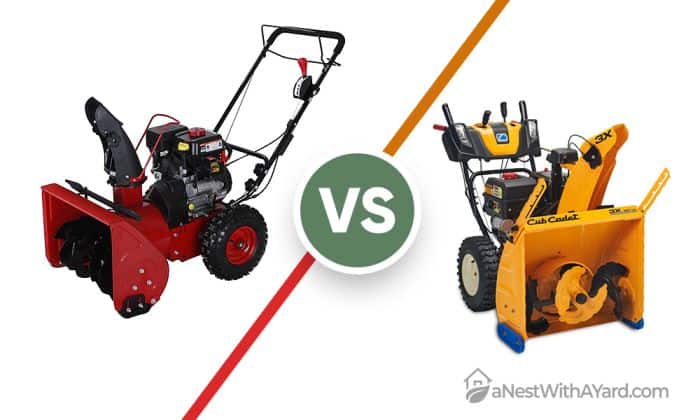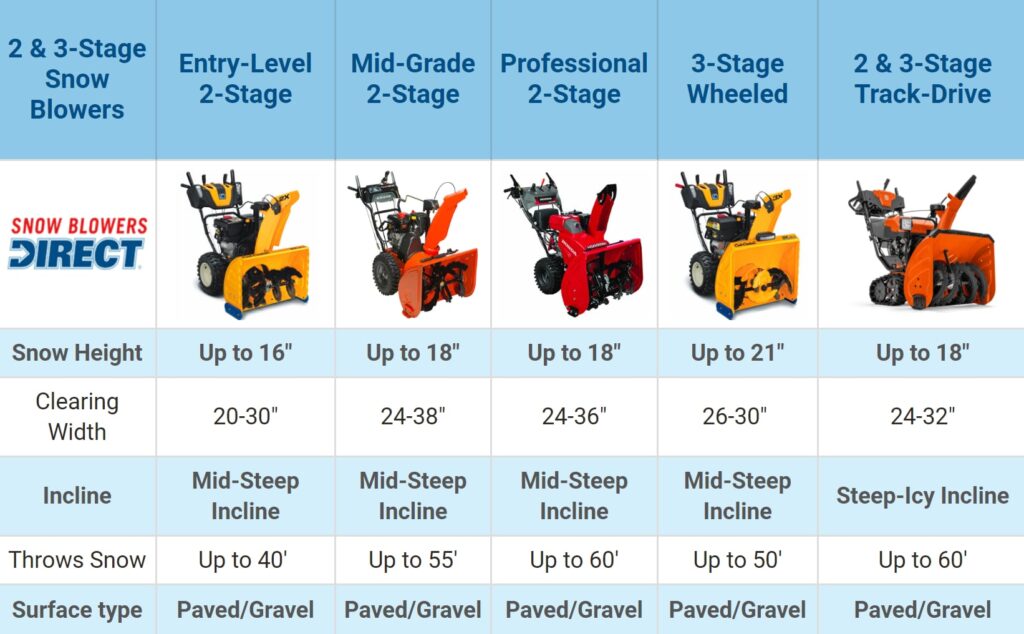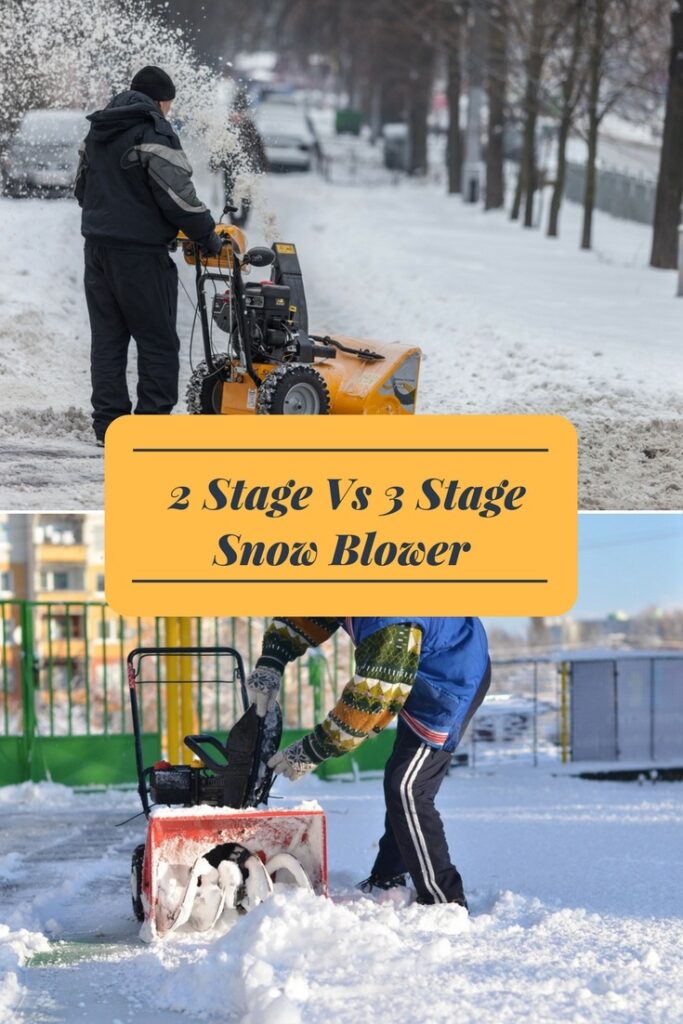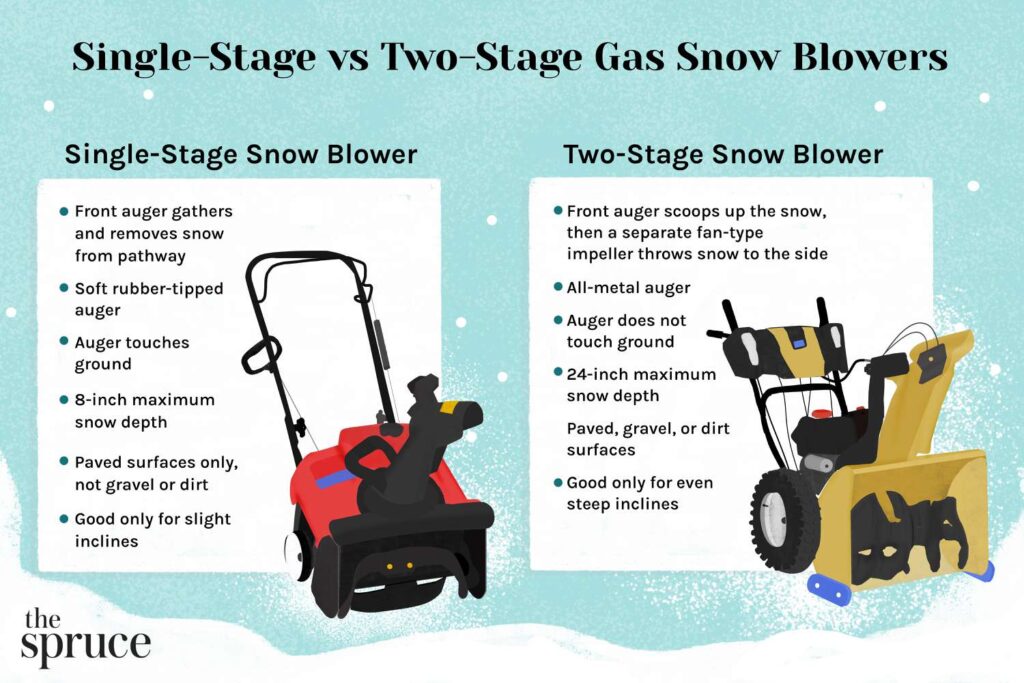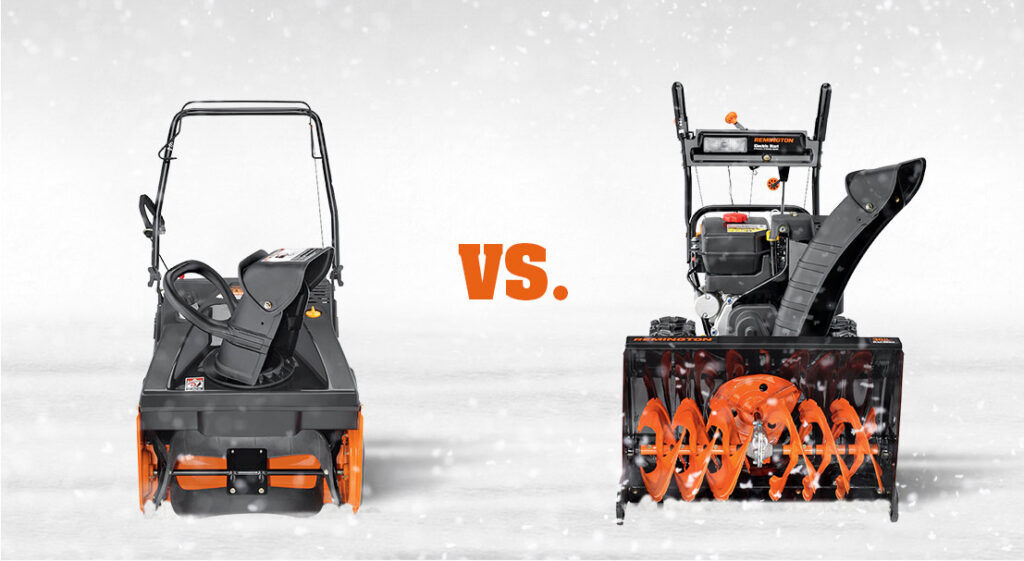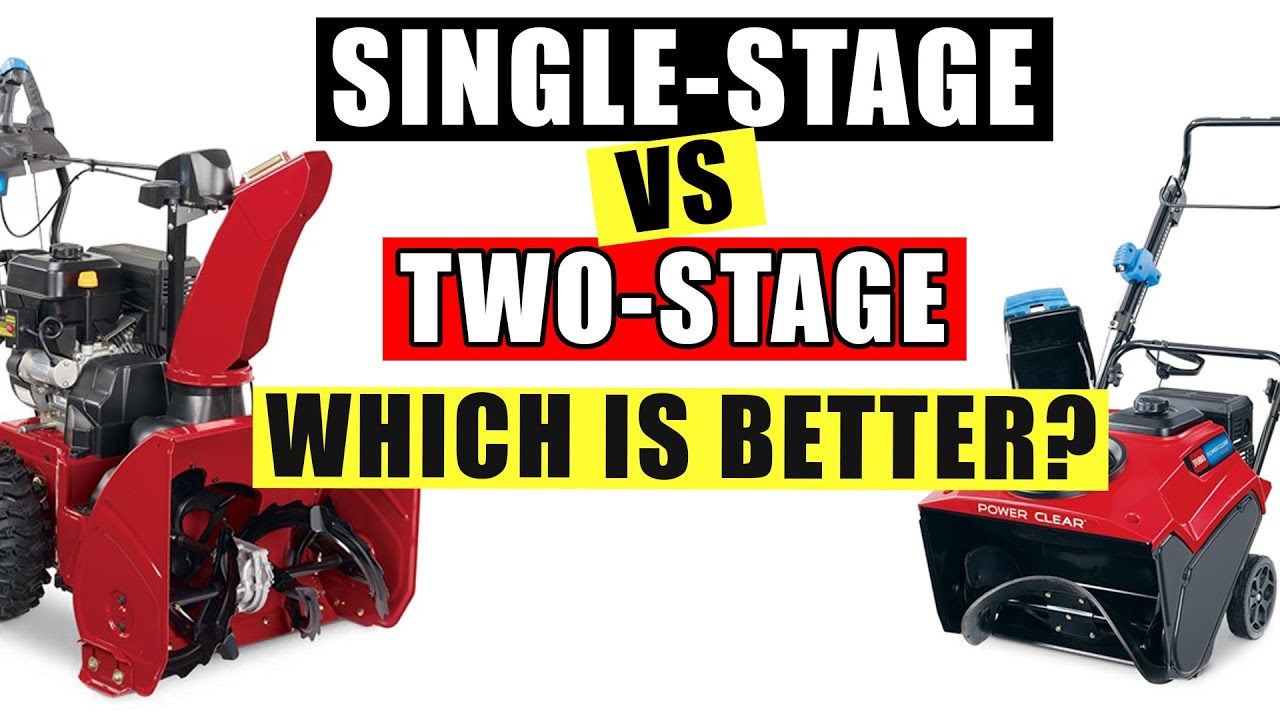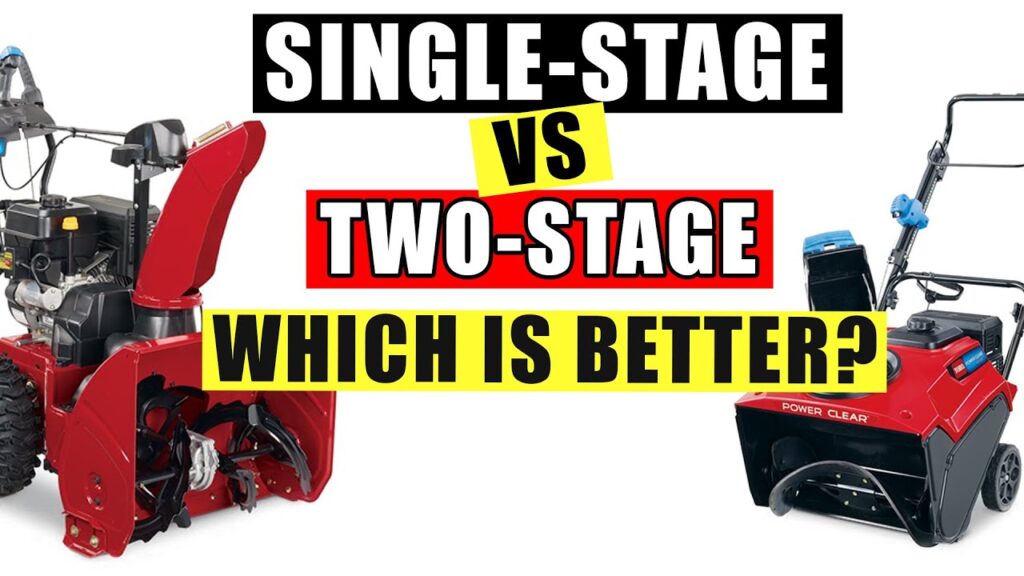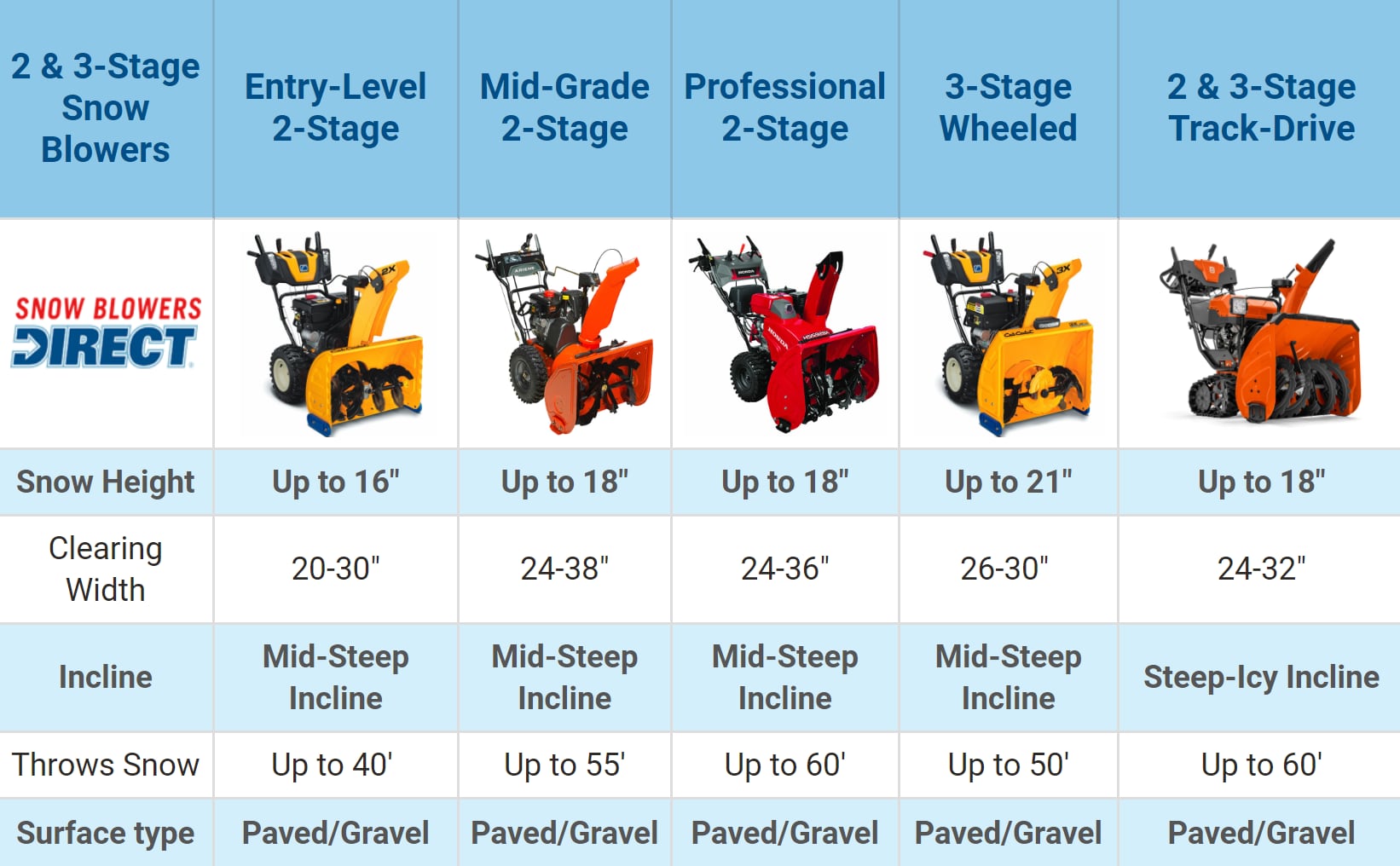Are you tired of the never-ending battle with snow piling up in your driveway? Don’t worry, we’ve got you covered! In this article, we will explore the age-old question: Which is better, a 2 stage or 3 stage snow blower? As the snow starts to fall, it’s important to have the right equipment to handle the job efficiently and effectively. With the help of our expert guidance, you’ll be able to make an informed decision and say goodbye to back-breaking snow shoveling for good. So, let’s dive right in and discover the perfect snow blower for your winter needs!
Comparison of 2 Stage and 3 Stage Snow Blowers
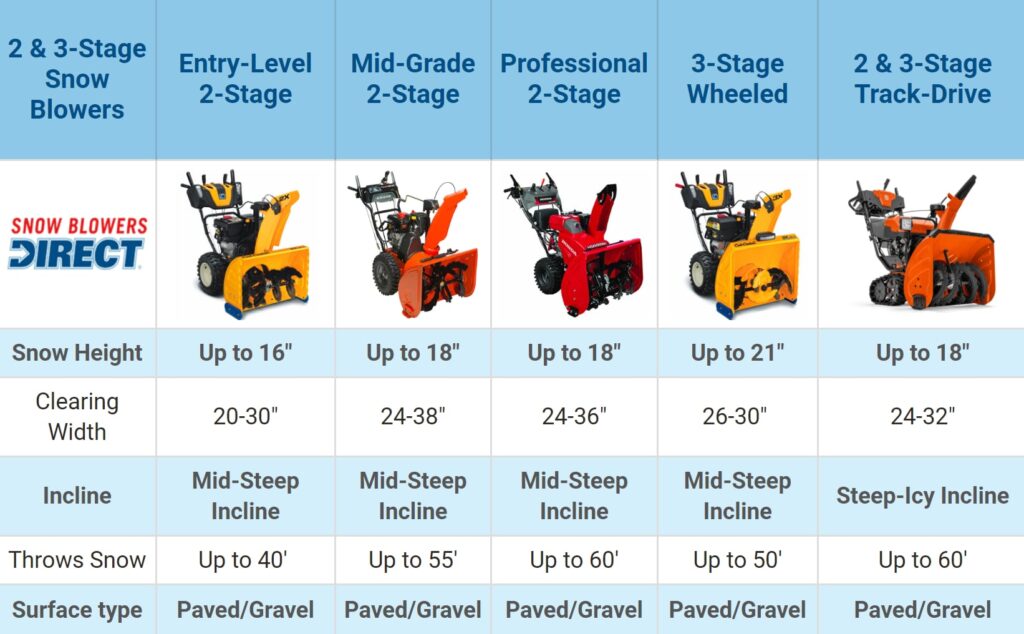
This image is property of www.snowblowersdirect.com.
Functionality
When it comes to snow blowers, both 2 stage and 3 stage models are designed to efficiently clear snow from driveways, walkways, and other outdoor areas. However, they differ in terms of functionality.
How 2 Stage Snow Blowers Work
2 stage snow blowers are equipped with an auger that scoops up the snow and a separate impeller that throws the snow out through a discharge chute. This two-step process allows the snow blower to handle larger amounts of snow and throw it further away.
How 3 Stage Snow Blowers Work
On the other hand, 3 stage snow blowers go a step further by incorporating an additional accelerator. This accelerator helps break up icy and compacted snow, ensuring better clearing capability. The three-stage process of scooping, breaking up, and throwing the snow makes 3 stage snow blowers even more efficient in heavy snowfall conditions.
Snow Clearing Capacity
When considering snow clearing capacity, two factors come into play: clearing path width and snow throwing distance.
Clearing Path Width
The clearing path width refers to the width of snow that can be cleared in a single pass. In general, both 2 stage and 3 stage snow blowers offer a wide range of clearing path widths to choose from. However, 3 stage snow blowers tend to have wider clearing paths, allowing for quicker snow removal.
Snow Throwing Distance
Snow throwing distance is an important factor to consider, especially if you want to clear a large area. In this aspect, 3 stage snow blowers outperform 2 stage snow blowers. The additional accelerator in 3 stage snow blowers helps propel the snow at a greater distance, ensuring efficient snow disposal.
Efficiency
Efficiency is crucial when it comes to snow blowers. It determines how quickly and effectively the machine can clear snow.
Clearing Speed
When it comes to clearing speed, both 2 stage and 3 stage snow blowers tend to be quite efficient. However, due to the additional accelerator, 3 stage snow blowers can clear snow at a slightly faster rate. This can be especially advantageous when dealing with larger areas or heavy snowfall.
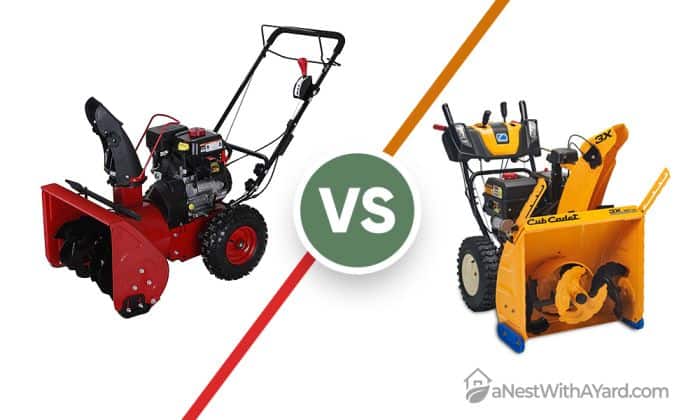
This image is property of anestwithayard.com.
Ability to Handle Wet and Heavy Snow
One of the key advantages of 3 stage snow blowers is their ability to handle wet and heavy snow with ease. The accelerator helps break up the compacted snow, making it easier for the machine to clear. While 2 stage snow blowers can also handle wet and heavy snow, they may struggle if the snow has become overly compacted or icy.
Durability
When investing in a snow blower, durability is an essential factor to consider. Nobody wants a machine that will break down after a couple of uses.
Build Quality
Both 2 stage and 3 stage snow blowers are typically built with sturdy construction, ensuring durability. However, it is important to check the build quality and choose a reputable brand that offers reliable machines. This way, you can be confident that your snow blower will withstand the rigors of heavy snow clearing.
Materials Used
The materials used in the construction of snow blowers also play a significant role in their overall durability. High-quality materials, such as robust steel, are often incorporated into the design to ensure long-lasting performance. It’s advisable to opt for a snow blower that utilizes durable materials, as it will likely have better longevity.

This image is property of i.ytimg.com.
Price
Price is an important consideration for many people. It is essential to find a snow blower that not only meets your needs but also fits within your budget.
Cost of 2 Stage Snow Blowers
In general, 2 stage snow blowers tend to be more affordable compared to their 3 stage counterparts. This makes them a popular choice for homeowners who need a reliable snow blower but don’t want to break the bank. However, it’s worth considering if the slightly higher cost of a 3 stage snow blower is worth the added benefits in terms of functionality and performance.
Cost of 3 Stage Snow Blowers
While 3 stage snow blowers may come with a higher price tag, they often justify the cost with their superior snow clearing capabilities and efficiency. If you live in an area that experiences heavy snowfall or often deals with wet, compacted snow, investing in a 3 stage snow blower could be a wise decision in the long run.
Ease of Use
Snow blowers should be user-friendly and easy to operate, especially for individuals who may not have extensive experience with such equipment.

This image is property of agreenhand.com.
Weight
The weight of a snow blower can vary between models and brands. Generally, 2 stage snow blowers are lighter and more manageable compared to their 3 stage counterparts. This makes them easier to maneuver and transport, which can be an advantage if you have limited physical strength or need to navigate tight spaces.
Starting Mechanism
Both 2 stage and 3 stage snow blowers typically feature electric start mechanisms, making them convenient to start even in colder conditions. This eliminates the need for manual pulling and ensures a smoother and hassle-free start-up process.
Control Features
The control features of snow blowers can vary, but both 2 stage and 3 stage models usually offer easy-to-use controls. Look for snow blowers with intuitive controls and adjustable features, such as chute direction control and adjustable clearing height. These features can enhance the overall user experience and make operating the machine more convenient.
Maneuverability
Maneuverability is an essential consideration when dealing with snow blowers, as it determines how easily you can navigate the machine around your property.

This image is property of i.ytimg.com.
Turning Radius
The turning radius of a snow blower plays a significant role in its maneuverability. Smaller turning radii allow for tighter turns, making it easier to clear snow in confined spaces or around obstacles. When comparing 2 stage and 3 stage snow blowers, 2 stage models generally have smaller turning radii due to their lighter weight.
Tire Design
The design of the tires can also impact maneuverability. Snow blowers with larger, wider tires tend to have better traction and stability, which can be beneficial when operating on uneven or slippery surfaces. While both 2 stage and 3 stage snow blowers typically come with sturdy tires, it’s worth considering the specific tire design of the model you are interested in.
Maintenance
Proper maintenance is crucial to ensure the longevity and optimal performance of any snow blower.
Cleaning and Lubrication
Regular cleaning and lubrication are essential to keep the snow blower functioning smoothly. This includes removing any accumulated snow, ice, or debris from the auger, chute, and other parts of the machine. Additionally, lubricating moving parts, such as the auger shaft, helps minimize friction and keep the snow blower running efficiently.
Potential Repairs and Replacements
Like any mechanical equipment, snow blowers may require occasional repairs or part replacements over time. It is important to consider the availability of spare parts and the reputation of the manufacturer when purchasing a snow blower. Opting for a reputable brand often ensures better customer support and access to genuine replacement parts when needed.
Noise Level
Snow blowers can generate varying levels of noise during operation, which may be a consideration for some individuals.
Noise Level of 2 Stage Snow Blowers
2 stage snow blowers typically generate a moderate amount of noise, but noise levels can vary between models. It’s advisable to check the manufacturer’s specifications and customer reviews to get an idea of the noise level of a specific model. Some snow blowers may incorporate noise reduction features to minimize disruptions to your surroundings.
Noise Level of 3 Stage Snow Blowers
Similar to 2 stage snow blowers, the noise level of 3 stage snow blowers can also vary. However, it’s worth noting that the additional accelerator in 3 stage models might generate slightly more noise during operation. If noise level is a significant concern for you, consider researching models with noise dampening features or invest in appropriate hearing protection.
Suitability for Different Snow Conditions
Different regions and climates experience varying snow conditions, so it is essential to choose a snow blower that can handle the type of snow you typically encounter.
Light Snowfall
For areas with light snowfall, both 2 stage and 3 stage snow blowers should be capable of handling the task efficiently. However, 2 stage snow blowers may be more than sufficient for these conditions, considering their lower price and comparable performance.
Moderate Snowfall
Moderate snowfall can easily be cleared by both 2 stage and 3 stage snow blowers. If you live in an area where moderate snowfall is common, either type of snow blower should be suitable for your needs. Consider factors such as price, clearing path width, and snow throwing distance to determine which model suits you best.
Heavy Snowfall
In regions that experience heavy snowfall, a 3 stage snow blower is likely a better choice. The additional accelerator delivers superior snow clearing capabilities, making it easier to handle large accumulations of snow. If you frequently find yourself dealing with heavy snowfall, investing in a 3 stage snow blower can save you time and effort.
Wet Snow and Slush
Wet snow and slush can be particularly challenging to clear since they are heavier and more difficult to throw. While both 2 stage and 3 stage snow blowers can handle wet snow and slush to a certain extent, 3 stage models have an advantage due to their enhanced ability to break up compacted snow. If wet snow and slush are common in your area, opting for a 3 stage snow blower can make your snow clearing tasks more manageable.
In conclusion, the choice between a 2 stage or 3 stage snow blower ultimately depends on your specific needs and snowfall conditions. While 2 stage snow blowers offer affordability and decent performance, 3 stage snow blowers excel in clearing heavy snow and handling wet, compacted snow. Consider factors such as snow clearing capacity, efficiency, durability, and your budget to make an informed decision. Ultimately, whichever snow blower you choose, it will make the winter season more bearable by efficiently and effectively clearing snow from your outdoor areas. Stay warm and enjoy the snow!
